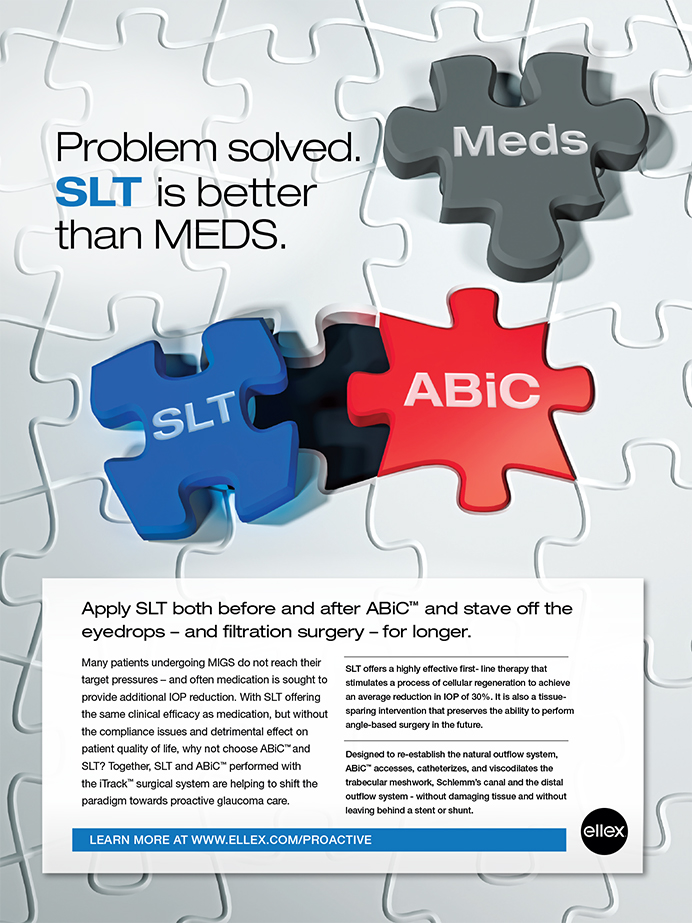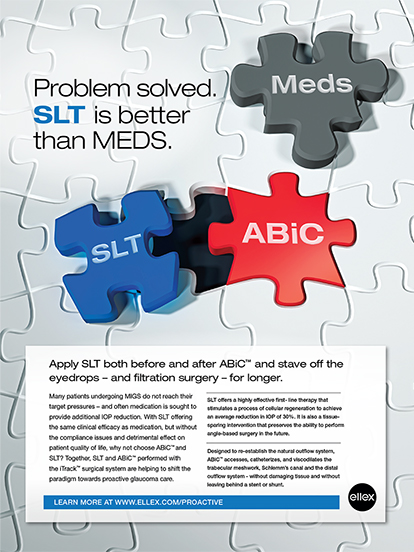More than 70% of the average optometrist’s income still comes from goods and services related to glasses and contact lenses,1 and only 17% of our revenue is derived from medical optometry.2 To say this is a missed opportunity is an understatement.
So how do you start to increase your participation in medical optometry? Based on disease prevalence and potential return on investment, I strongly suggest focusing on age-related macular degeneration (AMD). AMD is more prevalent than glaucoma and diabetic retinopathy combined—and by the year 2050, its prevalence is estimated to double.3 By instituting simple changes to patient intake, you can increase practice profits significantly while providing vision-saving service to patients.
DARK ADAPTATION
Begin with a simple question to the patient: “Are you having trouble seeing or driving at night?” An affirmative answer in older patients is a reason to screen for AMD using dark adaptation testing.
Screening with an automated dark adaptometer such as the AdaptDX (MacuLogix) can uncover new cases of subclinical or early AMD. Some clinicians report that 30% to 40% of patients with night vision complaints fail the AdaptDx Rapid Test, which indicates an AMD diagnosis with 90% accuracy.4
My practice evaluated 100 patients older than 60 years with no visible drusen using automated dark adaptometry; 39 patients failed the dark adaptation test. This led to further examination and testing due to diagnosis of subclinical AMD.
OCT
Dark adaptation testing can demonstrate functional loss. To document corresponding structural changes, OCT is the most appropriate test.
Dark adaptation is cobillable with OCT and/or visual field testing. The follow-up interval can be shortened to every 3 or 4 months for patients who are progressing rapidly or are at high risk of developing choroidal neovascularization. (For a comprehensive guide to coding for AMD diagnosis, see Table 1 below.)

BETTER PATIENT CARE RESULTS IN INCREASED REIMBURSEMENT
Once subclinical AMD is diagnosed, you can determine a course of action and start monitoring patients more frequently. I favor an interval of every 6 months. More frequent visits and auxiliary assessments benefit patients with AMD by increasing the likelihood of detecting choroidal neovascularization before visual acuity loss occurs. For the practice, these additional visits and tests have the added benefit of increasing reimbursement.
For the sake of illustration, consider the 39 of 100 patients in my practice who failed dark adaptation testing to be an average number. Without an early AMD diagnosis, I typically would see those 39 patients annually, and bill private insurance and/or Medicare as appropriate for annual exams (approximately $150).
With a diagnosis of early AMD, I now see those 39 patients more frequently to actively monitor for disease progression. Each patient now represents approximately $500 in medically necessary exams and testing in the first year of early AMD diagnosis:
- First visit: Routine exam + Dark adaptation rapid test = $150
- Second visit 2 weeks later: Medical office visit ($70) + Dark adaptation extended test ($64) + Imaging ($40) = $174
- Third visit for 6-month follow-up: Medical office visit ($70) + Dark adaptation extended test ($64) + Imaging ($40) = $174
KNOWING WHEN TO REFER
Monitoring of early AMD in patients with subclinical disease will last only so long. When patients reach the point that vision loss is present or is imminent, prompt referral to a retina specialist should be made. Some patients may return to your practice for monitoring or other needs; others may stay largely with the retina clinic. Regardless, given the rising prevalence of AMD, it is incumbent upon optometrists to monitor at-risk patients for disease and to take the necessary courses of action based on examination findings.
- American Optometric Association. The State of the Optometric Profession 2013. Accessed October 5, 2018. https://www.aoa.org/Documents/news/state_of_optometry.pdf
- Practice Advancement Associates. Management & Business Academy for Eye Care Professionals. Key Metrics: Assessing Optometric Practice Performance. 2015 Edition.Revenue sources. http://ecpu.com/media/wysiwyg/docs/paa_keymetrics_0415.pdf. Published 2015. Accessed September 4, 2018.
- National Eye Institute. Projections for AMD (2010-2030-2050). https://nei.nih.gov/eyedata/amd#5. Accessed September 4, 2018.
- Jackson GR, Scott IU, Kim IK, et al. Diagnostic sensitivity and specificity of dark adaptometry for detection of age-related macular degeneration. Invest Ophthalmol Vis Sci. 2914;55(3):1427-1431.






